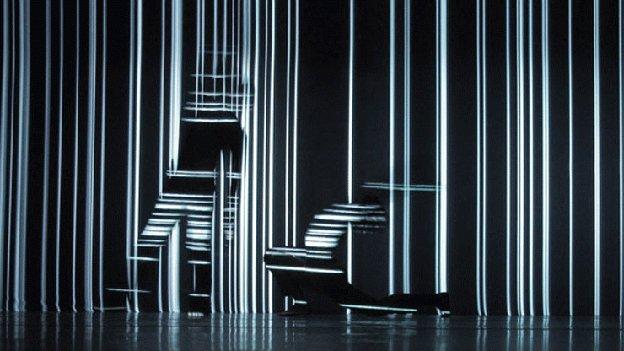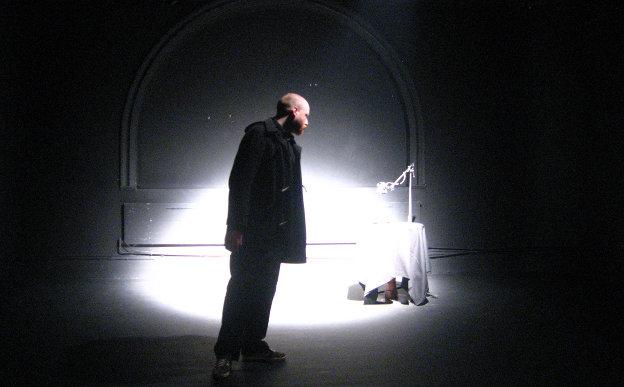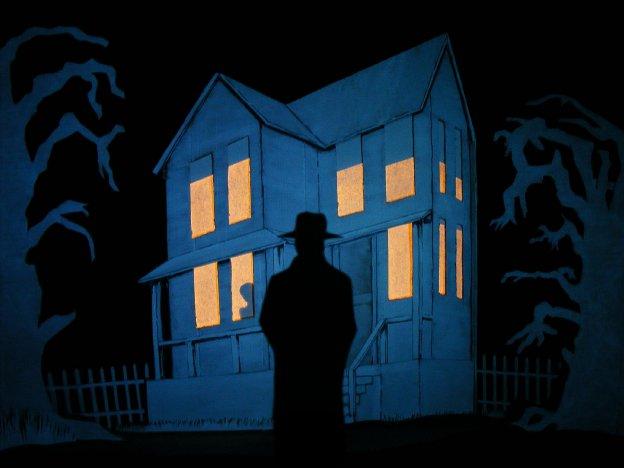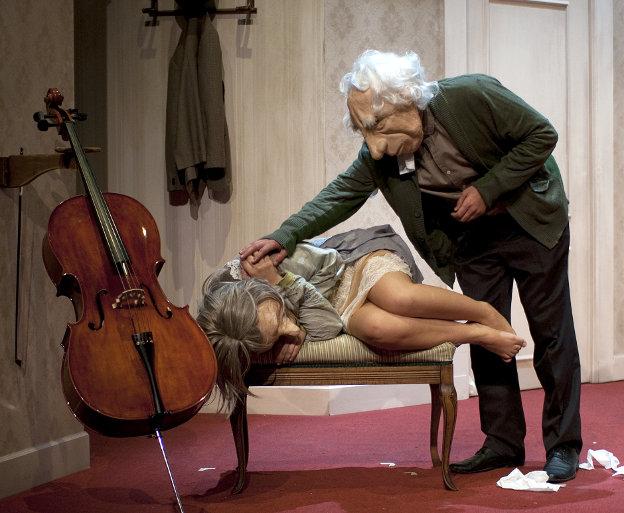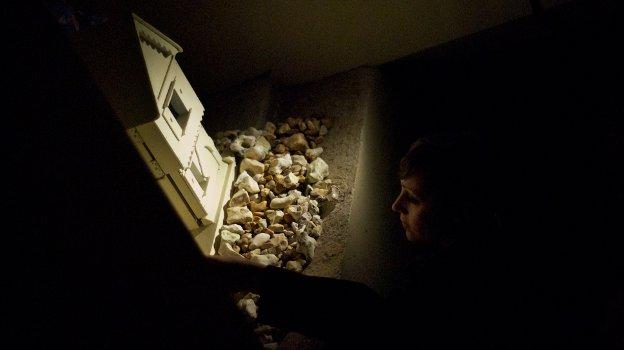
Platform 4’s Memory Point(s) is a site-specific piece set in and around The Point in Eastleigh. Formerly a Town Hall, the rambling building offers up staircases and corridors, corners and cupboards, as well as the backstage areas, dressing rooms and unseen parts of what is now a theatre. To create Memory Point(s) Platform 4 worked for 18 months alongside members of the Alzheimer’s Society Southampton, and Eastleigh Connections Club for younger people with dementia and their carers. Workshops were run, memories and creative ideas were shared and noted, with the focus not on the trauma of Alzheimer’s, but on the gathering and distillation of pleasurable, joyful memories. The piece is therefore a celebration of the participants, their enthusiasm and energy shaping the form and content of this heartwarmingly engaging, atmospheric and experiential show. Different artists ran different workshops, and the videos, installations, music, and costumes that we see inMemory Point(s) are all there because of the direct and individual connections made with the original participants. For example, the experience of dressing up was a strong one for the participants, so this is included as one of the activities that we, as the roaming audience, engage with; other thematic points include memories of trips to the seaside, evenings out, holidays. All the music – both recorded and live, heard through headphones – was inspired by the participant groups, with the sea providing the connecting theme.
I was intrigued from the beginning of the journey, and captivated by the subsequent encounters that I shared with four other audience adventurers. At the outset, across the road from The Point, a smartly dressed man holding a green balloon gave us directions back across the road and into the costume draped and clad box office area… From there on doors were opened, invitations offered, and the man with the green balloon magically and calmly appeared back inside the building and invited us to sit and receive headphones that helped us on our way. Full of charm, and delight, and the nostalgia of a bygone time, we ventured into corridors and cupboards, receiving keys and packets of seaside rock, dressing up, looking up ladders, and discovering wonderful musicians, each encounter full of a sense of occasion, a sense of wonder and discovery, rather than loss and confusion.
A culmination and highlight at the end was waiting in the wings and being led on stage for a photographic moment whilst adorned in the fancy dress of our choice. There was great music and a cup of tea, plus a fancy iced cake, and a chair on stage that looked out over the empty auditorium. Then down in the orchestra pit, which was barren yet strewn with last autumn’s leaves, there was a rustle, and without noticing how she arrived there I was taken aback to see a lady in a blue party dress lying face-down, prostrate. There followed an evocative solo dance, choreographed and performed by Sacha Lee, based on loss, laughter and letting go…
I so enjoyed the sense of space, and the distance, the dark corridor moments and really not knowing where I was going or what I would encounter next, yet still feeling guided in a comfortable and celebratory manner. The live music was a delight: double bass, fiddle, piano, and glockenspiel made it an even richer experience. I would have liked to have had more time to have absorbed atmospheres and to ponder, yet this was a tour, a privileged ‘stopping off’ at other peoples memories that let us glimpse their former lives. The piece aims to be a celebration of happy memories, of love and living life to the full, giving a magical experience for everyone to enjoy – and in this it certainly succeeded. I came away feeling like I’d really witnessed and been part of something unique, and was charmed, moved and enriched in equal measures.
www.platform4.org

